From, A.W. Liley, “The Foetus as a Personality,” Australian and New Zealand Journal of Psychiatry (1972) Vol 6: 99
Reproduced with permission.
Download PDF Version What is PDF?
Note from the Editors:
Sir William Liley was one of the fathers of fetal therapy and paradoxically one of the greatest early influences acting to retard the development of fetal surgery. If the group in Auckland, New Zealand, had not been so outstandingly successful in the development of percutaneous fetal transfusions, then fetal surgery would have had to have developed to a point where major fetal surgery could have been routine by this time. His untimely death in 1983 robbed the field of fetal therapy of a mentor of incredible experience, breadth of vision and wisdom.
This paper was based on an invited paper delivered to the Eighth Annual Congress of the Australian and New Zealand College of Psychiatry in October, 1971. A wide variety of facts about fetal physiology are reviewed, exploding the myth of the foetus as a passenger carried to term, and pointing out that the foetus is an active, developing individual responding to his environment in ways designed to improve his comfort. Liley’s humor and tremendous breadth of knowledge are both amply illustrated in this article. He is sorely missed.
The Foetus as a Personality
By A.W. Liley
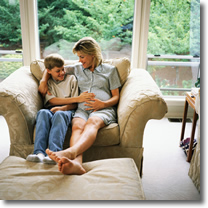 I did not choose the title of this presentation.
Had I done so, I would have been more careful in my selection of words. The foetus is part of my province of medical practice, and
personality is part of yours. But whereas I am sure that you could all define, describe and even recognize a foetus, I am not so
confident that I can define personality. One dictionary offers ’what constitutes an individual as a distinct person,’ but does not define
what the ’what’ is. Another dictionary asserts ’the state of existing as a thinking intelligent being’. This definition might lead to the
inference that personality increases pro rata with intelligence, or that some people may not have a personality at all if we followed Bertrand
Russell’s dictum that ’most people would rather die than think and many, in fact, do!’ My copy of the late Ken Stallworthy’s Manual of Psychiatry is more help
with the definition that ’personality is the individual as a whole with everything about him which makes him different from other people,’
because we can certainly distinguish foetuses from each other and from other people. With the next sentence - ’personality is determined by
what is born in the individual in the first place and by everything which subsequently happens to him in the second’ - we are really in
business. Not only can I tell you what is apparent of what is born in the foetus, but I can also describe the environment in which he lives,
the stimuli to which he is exposed, and the responses which he displays. Therefore it might have been more apt to title this presentation ’A
day in the life of the foetus,’ and together we can revisit a stage of life which we all experienced but which, superficially at least, none
of us remembers.
I did not choose the title of this presentation.
Had I done so, I would have been more careful in my selection of words. The foetus is part of my province of medical practice, and
personality is part of yours. But whereas I am sure that you could all define, describe and even recognize a foetus, I am not so
confident that I can define personality. One dictionary offers ’what constitutes an individual as a distinct person,’ but does not define
what the ’what’ is. Another dictionary asserts ’the state of existing as a thinking intelligent being’. This definition might lead to the
inference that personality increases pro rata with intelligence, or that some people may not have a personality at all if we followed Bertrand
Russell’s dictum that ’most people would rather die than think and many, in fact, do!’ My copy of the late Ken Stallworthy’s Manual of Psychiatry is more help
with the definition that ’personality is the individual as a whole with everything about him which makes him different from other people,’
because we can certainly distinguish foetuses from each other and from other people. With the next sentence - ’personality is determined by
what is born in the individual in the first place and by everything which subsequently happens to him in the second’ - we are really in
business. Not only can I tell you what is apparent of what is born in the foetus, but I can also describe the environment in which he lives,
the stimuli to which he is exposed, and the responses which he displays. Therefore it might have been more apt to title this presentation ’A
day in the life of the foetus,’ and together we can revisit a stage of life which we all experienced but which, superficially at least, none
of us remembers.
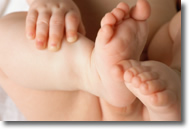 Such a journey is justified for several reasons. For many
centuries interest in foetal life was restricted to anatomical studies by embryologists or to mechanical problems in delivery as
they presented to the accoucheur. The legacies of this era are well known - particularly the attitude that, apart from
some aimless kicking which began in the fifth month, the foetus was a placid, dependent, fragile vegetable who developed
quietly in preparation for a life which started at birth. In the present century, many disciplines have extended their
interest to include the foetus, but in fields from surgery to psychiatry the tendency has been to start with adult
life and work backwards - knowing what the adult state was, one worked back to what seemed a reasonable starting point
to reach that goal. Therefore, in fields from physiology and biochemistry to education and psychology, there has
grown up the habit of regarding the foetus and the neonate as a poorly functioning adult rather than as a splendidly functioning baby.
Such a journey is justified for several reasons. For many
centuries interest in foetal life was restricted to anatomical studies by embryologists or to mechanical problems in delivery as
they presented to the accoucheur. The legacies of this era are well known - particularly the attitude that, apart from
some aimless kicking which began in the fifth month, the foetus was a placid, dependent, fragile vegetable who developed
quietly in preparation for a life which started at birth. In the present century, many disciplines have extended their
interest to include the foetus, but in fields from surgery to psychiatry the tendency has been to start with adult
life and work backwards - knowing what the adult state was, one worked back to what seemed a reasonable starting point
to reach that goal. Therefore, in fields from physiology and biochemistry to education and psychology, there has
grown up the habit of regarding the foetus and the neonate as a poorly functioning adult rather than as a splendidly functioning baby.
Until recently, the human foetus in situ was inaccessible to study and this seclusion has had two further unfortunate results. First, much reliance has been placed on animal experiment in spite of the fact that there is more variation throughout the mammalian order in reproductive physiology than in the physiology of any other body function. Second, for want of experimental verification or repudiation, theories have flourished without serious challenge. As a consequence, at one extreme, J.J. Rousseau and his pupils could regard the foetus as a witless tadpole with a mind like a cleanly washed slate - the tabula rasa - and at the other extreme some interpreters of dreams considered the foetus a skilled voyeur, spying on his parents having intercourse - a sort of ’what the butler saw’ through the cervix.
If, with regret, we must abandon such fascinating conjecture, I hope that we can replace it with equally interesting fact, because recent advances in foetal diagnosis and therapy have provided both the technology and opportunity to piece together a new picture of the foetus. Far from being an inert passenger in a pregnant mother, the foetus is very much in command of the pregnancy. It is the foetus who guarantees the endocrine success of pregnancy and induces all manner of changes in maternal physiology to make her a suitable host. It is the foetus who, single-handed, solves the homograft problem - no mean feat when we reflect that, biologically, it is quite possible for a woman to bear more than her own body weight of babies, all immunological foreigners, during her reproductive career. It is the foetus who determines the duration of pregnancy. It is the foetus who decides which way he will lie in pregnancy and which way he will present in labour. Even in labour the foetus is not entirely passive - neither the toothpaste in the tube nor the cork in the champagne bottle, as required by the old hydraulic theories of the mechanics of labour. Much of the behaviour of the neonate and infant can now be observed in utero and, by corollary, a better understanding of the foetus and his environment puts the behaviour and problems of the neonate in better perspective.

In his warm and humid microclimate, the foetus is in neither stupor nor hypoxic coma. From the few electroencephalographic studies, he appears to show cyclical activity, the lighter periods of which correspond in the neonate to a drowsy wakefulness from which he is readily aroused by a variety of stimuli. Like all internal organs, the uterus is insensitive to touch, indeed, to all stimuli except stretch. Hence foetal movements are not felt in the uterus but in the maternal abdominal wall, which explains why quickening is not apparent until 16 to 22 weeks of gestation. The foetus has been moving his limbs and trunk since about eight weeks, but some 10 or more weeks elapse before these movements are strong enough to be transmitted to the abdominal wall. In some 40 per cent of pregnancies, an additional cushion, the placenta, is on the anterior uterine wall, and this phenomenon plus variation in foetal position explains why maternal account or external palpation may be a very erratic guide to foetal vigour and welfare.
Foetal comfort determines foetal position, but comfort presents no problem in the first half of pregnancy when the foetus inhabits a relatively large and globular cavity. He is under no restriction and has no axis of stability. Occasionally these conditions still prevail in late pregnancy - in the presence of polyhydramnios, or with a uterine cavity truncated by a fundal or praevia placenta - and then we see an unstable lie. Normally, however, in the second half of pregnancy, the uterine cavity is no longer globular but becomes progressively more ovoid with the lower pole narrower, and the foetus elongates more rapidly than the uterus. Therefore the foetus tends to be corralled into a longitudinal lie. However, amniotic fluid volume reaches a maximum at about 28 to 32 weeks, and until this time the foetus is far from cramped and under no obligation to lie well flexed. As amniotic fluid volume diminishes and foetal bulk increases from 32 weeks to term, comfort becomes more difficult to achieve. If he chooses to flex his knees, the foetus will present by the vertex as his head forms a smaller pole than his back, thighs, calves and feet, and this disposition corresponds to the polarity of the uterine cavity. If however he elects to extend his knees, he will fit in best as a breech since his tapering trunk and thighs form a smaller pole than his head, calves, and feet.
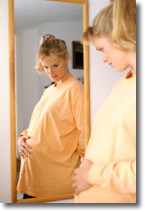 Variations of uterine contour, unusual size or location of the placental, and the presence of another foetus may all present further
challenges to foetal comfort and ingenuity and produce stable malpresentations. Foetal position, whether he lies with
his spine anterior, posterior, or lateral, is determined by other influences. In late pregnancy, the most important
of these are the location of the placental, which converts the circular cross section of the uterus to an oval, the
tone of mother’s uterine and abdominal wall, the shape of the maternal lumbar lordosis, and the inclination of the
pelvic brim. Maternal movement and change of maternal position, Brazton-Hicks contractions, and external palpation all disturb
the foetus and may provoke him to seek a new position of comfort. He will repeatedly and purposefully seek to avoid
the sustained pressure of a microphone or phonendoscope or of a knuckle on prominences.
Variations of uterine contour, unusual size or location of the placental, and the presence of another foetus may all present further
challenges to foetal comfort and ingenuity and produce stable malpresentations. Foetal position, whether he lies with
his spine anterior, posterior, or lateral, is determined by other influences. In late pregnancy, the most important
of these are the location of the placental, which converts the circular cross section of the uterus to an oval, the
tone of mother’s uterine and abdominal wall, the shape of the maternal lumbar lordosis, and the inclination of the
pelvic brim. Maternal movement and change of maternal position, Brazton-Hicks contractions, and external palpation all disturb
the foetus and may provoke him to seek a new position of comfort. He will repeatedly and purposefully seek to avoid
the sustained pressure of a microphone or phonendoscope or of a knuckle on prominences.
The mechanism by which the foetus changes ends in the uterus is simple - he propels himself around by his feet and legs. The mechanism by which he changes sides is more subtle - he employs an elegant longitudinal spiral roll and at the midpoint of his turn has a 180 degree twist in his spine. He first extends his head and rotates it, next his shoulders rotate and finally his lumbar spine and legs - in fact, he is using his long spinal reflexes. Insofar as this is the obvious way to turn over, there would be nothing remarkable about it except that according to textbooks of neonatal and infant locomotor function the baby does not roll over using his long spinal reflexes until 14 to 20 weeks of extrauterine life. However, we have unequivocal films of the foetus using this mechanism at least as early as 26 weeks gestation, and it is apparent that the reason we do not see this behaviour in the neonate is not that he lacks the neural co-ordination but that a trick which is simple in a state of neutral buoyancy becomes difficult under the new-found tyranny of gravity.
The very early embryo develops in flexion, but beyond this stage there is little evidence to justify the traditional assumption that flexion is fundamental in foetal musculoskeletal development. In midpregnancy with plenty of room, neutral buoyancy and intervertebral discs virtually synovial joints, he can assume postures difficult or impossible for the child or adult. In late pregnancy, as the foetus elongates more than the uterus, he must fold to fit in. Commonly the attitude is again one of flexion, but sometimes he elects to lie with neck, trunk or limbs extended and sometimes grossly hyperextended, a preference he will continue to express as his position of comfort after birth, particularly in sleep, if nursed naked in a warm environment.
Foetal movement is necessary for the proper development of foetal bones and joints. The foetus without muscles - amyotrophia congenita - has the slender bone structure more familiar in the victim of paralytic poliomyelitis. From the characteristic and uniform angulations in different limb segments, it is apparent that the fractures in the foetus with fragilitas osseum, the ’battered baby in utero,’ are self-inflicted by the baby’s own muscles. The foetus who is severely constrained in utero like a pound of deep frozen sausages with extreme oligohydramnios presents an assortment of compression deformities with severe restriction of joint range of movement.
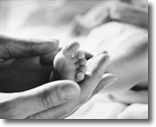 The realization that the foetus himself determines the way he will lie in pregnancy and present in labour by making the
best he can of the space and shape available to him puts the practice of version in new perspective, and nowadays
fewer obstetricians assume that they know better than the foetus how he will be most comfortable. Of course, in selecting
a position of comfort in later pregnancy, the foetus may have chosen a position which is difficult or impossible
for vaginal delivery. In this regard he may be accused of lack of foresight, but this is a trait not unknown in adults.
The realization that the foetus himself determines the way he will lie in pregnancy and present in labour by making the
best he can of the space and shape available to him puts the practice of version in new perspective, and nowadays
fewer obstetricians assume that they know better than the foetus how he will be most comfortable. Of course, in selecting
a position of comfort in later pregnancy, the foetus may have chosen a position which is difficult or impossible
for vaginal delivery. In this regard he may be accused of lack of foresight, but this is a trait not unknown in adults.
The foetus is responsive to pressure and touch. Tickling the foetal scalp at surgical induction of labour provokes movement, stroking the palm of a prolapsed arm elicits a grasp reflex, and to plantar stimulation the footling breech obliges with an upgoing toe. Being totally immersed, the foetus does not feel wet nor cough or choke with his airway full of fluid. The peripheral sensation of wetness and the irritation of fluid in the airways are dependent on surface tension effects at gas/fluid interfaces, and normally wetness is a new experience at birth. That this experience, however, may be startling if not uncomfortable for the foetus is suggested by the one recorded case of air amniography where the presence of a substantial volume of intraamniotic air led to prolonged loud foetal crying.
Since the foetus lacks an external surface of his own, his temperature inevitably cannot be less than his mother’s. Among many other functions, the placenta is his heat exchanger and its performance may be gauged by the fact that foetal temperature is normally 0.5 - 1.5 degrees Celsius above maternal core temperature. If mother runs a fever the foetus must also. The walls of the foetal world are probably not thermally homogenous, as thermography shows that the areas of the maternal abdominal wall over the placental site are several degrees hotter than areas over the chorion laeve. Although the range of ambient temperature to which the foetus is exposed is limited, his awareness of and reactions to thermal stimulation are intact before birth. If cold saline is run into the amniotic cavity, he shows appropriate motor and circulatory responses.
 The foetus responds with violent movement to needle puncture and to the intramuscular or intraperitoneal injection of
cold or hypertonic solutions. Although we would accept, rather selfishly, that these stimuli are painful for adults
and children and, to judge from his behaviour, painful for the neonate, we are not entitled, I understand, to assert
that the foetus feels pain. In this context I think Bertrand Russell’s remark in his Human Knowledge, its Scope and
Limitations, rather apt - he relates ’A fisherman once told me that fish have neither sense nor sensation but how
he knew this he could not tell me.’ It would seem prudent to consider at least the possibility that birth is a painful
experience for a baby. Radiological observation shows foetal limbs flailing during contractions, and if one attempts
to reproduce in the neonate by manual compression a mere fraction of the cranial deformation that may occur in the
course of a single contraction the baby protests very violently. And yet, all that has been written by poets and lyricists
about cries of newborn babies would suggest that newborn babies cried for fun or joie de vivre - which they never
do afterwards - and in all the discussions that have ever taken place on pain relief in childbirth only maternal pain
has been considered. Karelitz in New York has shown that, as judged by the strength of stimuli required to arouse
them, the first sleep of neonates is more profound than any subsequent sleep, and this is perhaps hardly cause for
surprise when we know that labour may represent very prolonged stimulation and interference with normal foetal activity cycles.
The foetus responds with violent movement to needle puncture and to the intramuscular or intraperitoneal injection of
cold or hypertonic solutions. Although we would accept, rather selfishly, that these stimuli are painful for adults
and children and, to judge from his behaviour, painful for the neonate, we are not entitled, I understand, to assert
that the foetus feels pain. In this context I think Bertrand Russell’s remark in his Human Knowledge, its Scope and
Limitations, rather apt - he relates ’A fisherman once told me that fish have neither sense nor sensation but how
he knew this he could not tell me.’ It would seem prudent to consider at least the possibility that birth is a painful
experience for a baby. Radiological observation shows foetal limbs flailing during contractions, and if one attempts
to reproduce in the neonate by manual compression a mere fraction of the cranial deformation that may occur in the
course of a single contraction the baby protests very violently. And yet, all that has been written by poets and lyricists
about cries of newborn babies would suggest that newborn babies cried for fun or joie de vivre - which they never
do afterwards - and in all the discussions that have ever taken place on pain relief in childbirth only maternal pain
has been considered. Karelitz in New York has shown that, as judged by the strength of stimuli required to arouse
them, the first sleep of neonates is more profound than any subsequent sleep, and this is perhaps hardly cause for
surprise when we know that labour may represent very prolonged stimulation and interference with normal foetal activity cycles.
The foetus drinks amniotic fluid in a phasic pattern throughout pregnancy, and measurement by isotropic techniques shows that his consumption has an affective rate of interquartile range 15 to 40 ml per hour in the third trimester. Now the foetus has a much larger number and a much wider distribution of taste buds in his oral cavity than the child or adult, but no-one knows - or can recall - whether the taste or flavour of amniotic fluid varies much or if, for instance, meconium stained fluid tastes worse than normal fluid. However, experimental modification of the taste of amniotic fluid produces dramatic results. Foetal drinking rates crash after the injection of the contrast medium Lipiodol - an iodinated poppy seed oil which tastes foul to an adult or child and which causes a neonate to grimace and cry. Conversely, de Snoo (1937) claimed that saccharin stimulated foetal swallowing, and our isotopic measurements support this claim with usually an approximate doubling of rate. However, some foetuses drink less after saccharin injection and perhaps, like the author, they find saccharin in concentration bitter rather than sweet.
Foetal swallowing appears the major if not the only route of disposal of amniotic fluid colloid and hence, especially in the second half of pregnancy, has an increasingly important effect on amniotic fluid homeostasis and volume. The foetus who cannot swallow, for example with oesophageal or duodenal atresia, has a polyhydramnios. Since foetal swallowing powerfully influences if not regulates amniotic fluid volume, what influences or regulates foetal swallowing? Now the foetus gains nourishment from amniotic fluid, for he digests the constituents of amniotic fluid. His calorie intake from this source may reach 40 calories per day and the foetus who cannot swallow is ’small for dates.’ Traditionally it has been assumed that hunger is a brand new sensation after birth, that in utero an obliging mother and faithful placenta have supplied baby’s every need. However, the sight of babies with gross intrauterine malnutrition makes it rather hard to believe that every foetus lives in a metabolic Nirvana. Could foetal hunger be the stimulus to foetal swallowing? Rather contrary to expectation on this hypothesis, in general, large, well-nourished babies swallow at a high rate and small, grossly malnourished babies at a very low rate. We could of course suggest that the malnourished child has passed beyond the hunger pangs and into the state of apathy and anorexia known from extrauterine starvation. However, the fact that the large, well-nourished foetus has a bulimia and the small, malnourished foetus an anorexia accords well with endocrine evidence that much of what has been called traditionally placental insufficiency is in fact primarily foetal and of hypothalamic origin.
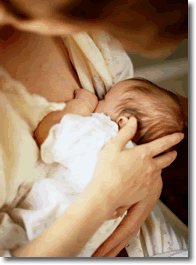 Foetal hiccups are common and often can be induced by irrigating the amniotic cavity with cold solutions. Foetal hiccups are easily recognized, and
mother should be reassured, for some have misgivings about these episodic series of clonic movements, especially if there is an epileptic somewhere in
the family cupboard.
Foetal hiccups are common and often can be induced by irrigating the amniotic cavity with cold solutions. Foetal hiccups are easily recognized, and
mother should be reassured, for some have misgivings about these episodic series of clonic movements, especially if there is an epileptic somewhere in
the family cupboard.
The foetus is not only experienced in swallowing, but also in many cases in suckling. In the neurological examination of the neonate, the ’seeking’ or ’rooting’ reflex is elicited by stroking the circumoral area. The baby opens his mouth and turns to the stimulus. This reflex is clearly the mechanism by which baby homes on the nipple and underlines the tremendous importance of feeding to the neonate. Indeed his face and mouth are the only part of his body the neonate can reliably locate in space and the mouth remains one of the chief tools of exploration in infancy. Since the foetus is often lying with hands and feet in close proximity to his face, he may readily elicit a seeking reflex himself. Accordingly, it is not uncommon in obstetric radiology to detect the foetus sucking thumbs, fingers or toes, and thumbsucking has been photographed in the 9-week abortus. Incidentally, the common observation in neonates of clenched fists, which would appear to preclude thumbsucking, is not a feature of babyhood really but of high thermal tone in muscle. Careful examination of hand position in x-rays shows that usually the foetus with his low thermal tone in his warm environment has his hands relaxed and his thumbs protruding.
Perhaps nowhere does the notion of foetal life as a time of quiescence, of patient and blind development of structures in anticipation of a life and function to begin at birth, die harder than in the concept of the pregnant uterus as a dark and silent world. Indeed even as great a neurophysiologist as Sir Charles Sherrington (1951) could speak of ’the miracle of the human eye developing in darkness for seeing in light and the miracle of the human ear developing in silent water for hearing in vibrant air.’ As anyone familiar with a phonendoscope knows, a pregnant abdomen is not silent, and the uterus and amniotic cavity, especially with any degree of polyhydramnios, may be readily transilluminated with a torch in a darkened room. Given a naked abdomen in sunshine, light intensities would be much higher. With a fibre optic light conduit and photomultiplier, not only can the intrauterine illumination produced by an external tungsten or quartz iodide lamp be recorded, but the shadow cast by the foetus is detectible.
 Now, for activation of visual pathways, there is strictly no threshold, for the visual rods respond individually to single
photons. Sure enough, Smith (1965) at University College Hospital found that flashing lights applied to the maternal
abdominal wall produced fluctuations in foetal heart rate. However, with the high attenuation in tissue, the abnormal
spectral composition and the boring view, what the foetus lacks is adequate illumination and a worthwhile image for
practice in cone or macular vision. At birth he can see but does not know what he is looking at. Confident recognition
of familiar people and reassurance from the sight alone of mother takes some 4 to 7 months of extrauterine life
to acquire. However, before this age the baby can be reassured by a familiar voice alone in the dark, and we have to argue
either that auditory recognition of patterns matures more rapidly than visual recognition, or that auditory experience
began earlier. The latter seems more likely.
Now, for activation of visual pathways, there is strictly no threshold, for the visual rods respond individually to single
photons. Sure enough, Smith (1965) at University College Hospital found that flashing lights applied to the maternal
abdominal wall produced fluctuations in foetal heart rate. However, with the high attenuation in tissue, the abnormal
spectral composition and the boring view, what the foetus lacks is adequate illumination and a worthwhile image for
practice in cone or macular vision. At birth he can see but does not know what he is looking at. Confident recognition
of familiar people and reassurance from the sight alone of mother takes some 4 to 7 months of extrauterine life
to acquire. However, before this age the baby can be reassured by a familiar voice alone in the dark, and we have to argue
either that auditory recognition of patterns matures more rapidly than visual recognition, or that auditory experience
began earlier. The latter seems more likely.
Sudden noise in a quiet room - the dropped gallipot or maternal voice - startles the foetus lined up under an image intensifier, and from at least 25 weeks the foetus will jump in synchrony with the tympanist’s contribution to an orchestral performance. By applying intermittent pure tones by hydrophone or air microphone to the maternal abdominal wall, foetal audiometric curves may be constructed by recording the abrupt changes in foetal heart rate. There is dispute among the professionals as to sound energy levels reaching the foetus (a given sound energy produces higher sound pressure levels in fluid) and naturally the state of foetal wakefulness and the maintenance of attention span are very hit and miss. Nevertheless, averaging of foetal electroencephalographic records with repeated stimuli shows sound evoked cortical potentials and demonstrates as does experience with deaf mothers that the foetus is responding directly. Both habituation and conditioning - dare we say learning? - have been noted.
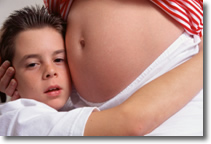 With tympanic membranes damped by fluid in both middle and external ears, the foetus could be expected to have a relative high-tone
deafness, but higher frequencies suffer less loss than low frequencies in transmission through tissues and fluid. Therefore,
it is probably that with sound, unlike light, intrauterine spectra are similar to extrauterine. Further, it is worth
nothing that, unlike most foetal organs which start off in miniature, the structures of the inner ear are very nearly
of adult size from initial development. This magnitude of course is necessary because cochlear spectral response obeys
simple physical laws dependent on cochlear dimensions. If, for instance, the cochlea grew in proportion to the rest
of the body, babies and children would hear in a different frequency range from adults and the communication gap between
generations would be even wider than it is already.
With tympanic membranes damped by fluid in both middle and external ears, the foetus could be expected to have a relative high-tone
deafness, but higher frequencies suffer less loss than low frequencies in transmission through tissues and fluid. Therefore,
it is probably that with sound, unlike light, intrauterine spectra are similar to extrauterine. Further, it is worth
nothing that, unlike most foetal organs which start off in miniature, the structures of the inner ear are very nearly
of adult size from initial development. This magnitude of course is necessary because cochlear spectral response obeys
simple physical laws dependent on cochlear dimensions. If, for instance, the cochlea grew in proportion to the rest
of the body, babies and children would hear in a different frequency range from adults and the communication gap between
generations would be even wider than it is already.
However, it is not only external sound which bombards the foetus. The pregnant uterus or abdomen is itself a very noisy place. The loudest sounds to reach the foetus or an intrauterine phonocatheter are maternal borborygmi peaking to 85 decibels. Reaching and below 55db the content is richer in pattern and meaning - the intermittent voice and the all pervading bruits, pulsing in synchrony with the maternal heart beat, of blood in the great arteries supplying the uterus and placental bed. Does this long exposure explain why a baby is comforted by holding him to your chest or is lulled to sleep by the old wives’ alarm clock, or the modern magnetic tape of a heart beat? Does this experience explain why the tick of a grandfather clock in a quiet study or library can be a reassurance rather than a distraction, why people asked to set a metronome to a rate which ’satisfies’ them will usually choose a rate in the 50-90 beat per minute range - and twins show a strong concordance in independent choice? Elias Carnetti points out that all the drum rhythms in the world belong to one or other of two basic patterns - either the rapid tattoo of animal hooves or the measured beat of a human heart. The animal hoof pattern is easy to understand from the ritual and sympathetic magic of hunting cultures. Yet, interestingly, the heart beat rhythm is more widespread in the world - even in groups like the plains Indians who hunted the great herds of bison. Is this rhythm deeply imprinted on human consciousness from foetal life?
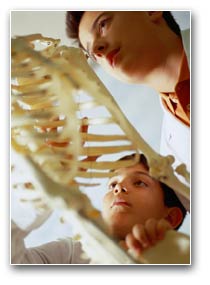
Not only do the human eye and ear, therefore, not develop in darkness and silence, but there is also good reason to believe from experimental work and comparative physiology that they would not develop properly in those conditions anyways. As with other foetal organs, development of structure and development of function go hand in hand. And if the function cannot be subserved without the development of the structure, equally the stimulus of the function is necessary for the proper maturation of the structure.
The mechanism by which a concept of sensory space develops has long been a troublesome topic for psychologists. However, for the amateur dabbler, the subject has received some much-needed simplification by the evidence that the various sensory modalities all feed and share a common space, and that this space in fact is the effective motor space. This synthesis certainly has logical simplicity to anyone who compares, say, the tunnel vision of the jet pilot or freeway driver with the short cone extending just a few yards ahead of the walker on rough ground and encompassing the field of the next few paces. Parallels in auditory function are easily drawn. When does such a concept of space begin? Refined experiment on the neonate suggests that his sensory space is a little ball, that although he may receive visual and auditory signals from more distant sources he is not much interested in anything outside a sphere which extends just beyond his toes - a restriction which very neatly corresponds to his recently vacated home.
This then is our picture of the foetus. He does not live in a padded, unchanging cocoon in a state of total sensory deprivation, but in a plastic, reactive structure which buffers and filters, perhaps distorts, but does not eliminate the outside world. Nor is the foetus himself inert and stuporose, but active and responsive.
 Since on the one hand the foetus is exposed to a variety of stimuli, and on the other hand can sense and respond to them, presumably we have the
prerequisites for learning of some sort. Is there in fact any evidence or suggestion that the foetus has learned anything in utero? Study is
understandably difficult, for not only are nature and nurture at least as intricately entangled in intrauterine life as in extrauterine life, but
for good measure any but the briefest observation and tests after birth may be compromised by the high rate of learning in the neonate. For
instance, babies who have had as few as 10 heel punctures for blood samples in the first 72 hours after birth, for weeks or months afterwards
will promptly cry if you thoughtlessly grasp their foot.
Since on the one hand the foetus is exposed to a variety of stimuli, and on the other hand can sense and respond to them, presumably we have the
prerequisites for learning of some sort. Is there in fact any evidence or suggestion that the foetus has learned anything in utero? Study is
understandably difficult, for not only are nature and nurture at least as intricately entangled in intrauterine life as in extrauterine life, but
for good measure any but the briefest observation and tests after birth may be compromised by the high rate of learning in the neonate. For
instance, babies who have had as few as 10 heel punctures for blood samples in the first 72 hours after birth, for weeks or months afterwards
will promptly cry if you thoughtlessly grasp their foot.
That recognition by voice precedes recognition by sight and the world preference in drum rhythms is suggestive of foetal learning, or at least imprinting. What of circadian rhythms? It is known that there is not one physiological clock but numbers of relatively independent clocks, some more stubborn than others. Moreover, that such rhythms are modified, if not determined, by activity cycles rather than of cosmic origin is strongly suggested by the evidence that the diurnal rhythms of the inhabitants of fishing villages, living by the tides, are lunar not solar in periodicity. In this context, it is interesting to reconsider the claim, at least of young parents, that the one thing that shows the foetus is utterly stupid is that many neonates do not seem to appreciate that night is a time for sleep.
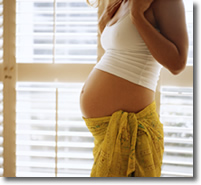 We know that maternal movement and change of position provoke foetal movement, that if we want a foetus lying still and unsuspecting for some
diagnostic or therapeutic procedure it is necessary to have mother lying still and comfortable for 15 to 20 minutes to allow the foetus to find
a position of comfort. Further, we must avoid last minute palpations and auscultations. Compare these precautions with the performance and
restlessness of many pregnant women in bed - with the leg cramps and heartburn, the subcostal and pelvic girdle discomfort, and for variation
a trip or two to the bathroom. The neonate could perhaps be forgiven if, as a foetus, he had gained the impression that night was anything
but a time for rest.
We know that maternal movement and change of position provoke foetal movement, that if we want a foetus lying still and unsuspecting for some
diagnostic or therapeutic procedure it is necessary to have mother lying still and comfortable for 15 to 20 minutes to allow the foetus to find
a position of comfort. Further, we must avoid last minute palpations and auscultations. Compare these precautions with the performance and
restlessness of many pregnant women in bed - with the leg cramps and heartburn, the subcostal and pelvic girdle discomfort, and for variation
a trip or two to the bathroom. The neonate could perhaps be forgiven if, as a foetus, he had gained the impression that night was anything
but a time for rest.
A similar cri de coeur concerns these young babies who cussedly elect to have their briefest rest periods and shortest intervals between feeds in the late afternoon and at dinner time just when it would be most helpful if they would sleep. For the breast fed baby, a ready explanation arises from the fact that there is a striking diurnal variation in the fat content of human milk - from as high as 9 per cent in the early morning to as low as 1 percent in the afternoon. Hence the breast fed baby may be shortchanged on calories on his afternoon feeds. However, precisely the same pattern may be seen in the bottle-fed baby, and we are left with the suspicion that the foetus may have been conditioned to the fact that this time of day represents peak activity for mother and peak uproar in many households.
 A question very commonly asked is whether maternal emotion elation, fear, anxiety, may be communicated to or influence the foetus. Certainly, with
monitored foetal hearts, there may be abrupt changes in rate with sudden maternal emotions. Such responses could be mediated indirectly by changes
in maternal arterial pressure, or directly by substances, for instance catecholamines, which cross the placenta. It has been argued that since the
foetus experiences only the consequences and not the cause of the emotion itself the experience would mean nothing to him. More recently this view
has been challenged on the evidence that the pharmacological induction of the physiological responses to fear and anxiety induces the sensation of
fear and anxiety also but this may be just a learned response.
A question very commonly asked is whether maternal emotion elation, fear, anxiety, may be communicated to or influence the foetus. Certainly, with
monitored foetal hearts, there may be abrupt changes in rate with sudden maternal emotions. Such responses could be mediated indirectly by changes
in maternal arterial pressure, or directly by substances, for instance catecholamines, which cross the placenta. It has been argued that since the
foetus experiences only the consequences and not the cause of the emotion itself the experience would mean nothing to him. More recently this view
has been challenged on the evidence that the pharmacological induction of the physiological responses to fear and anxiety induces the sensation of
fear and anxiety also but this may be just a learned response.
It is apparent that many more questions may be asked but as yet few answers given. What I have tried to do is to provide a background, so that by asking the right questions in the right way we might some time get the right answers. We may not all live to grow old but we were each once a foetus ourselves. As such we had some engaging qualities which unfortunately we lost as we grew older. We were physically and physiologically robust. We were supple and not obese. Our most depraved vice was thumbsucking, and the worst consequence of drinking liquor was hiccups not alcoholism.
When our cords were cut, we were not severed from our mothers but from our own organs - our placentae - which were appropriate to our old environment but unnecessary in our new one. We do not regard the foetal circulatory system, different as it is from the child’s or adult’s, as one big heap of congenital defects but as a system superbly adapted to his circumstances. We no longer regard foetal and neonatal renal function, asymmetric as it is by adult standards, as inferior, but rather entirely appropriate to the osmometric conditions in which it has to work. It is too much to ask therefore that perhaps we should accord also to foetal personality and behaviour, rudimentary as they may appear by adult standards, the same consideration and respect?
References
de Snoo, K.: Das trinkende Kind im Uterus. Mschr. Geburt. Gynak. 105: 88 (1937).
Karelitz, S.: Personal communication.
Serrington, C.: Man on his Nature, 2nd Edition (Cambridge University Press, Cambridge 1951).
Smyth, C. N.: Experimental methods for testing the integrity of the foetus and neonate. J. Obstet. Vynaec. Brit. Comm. 72: 920 (1965).
"The Foetus As A Personality" is posted with the permission of the Australian and New Zealand Journal of Psychiatry.
